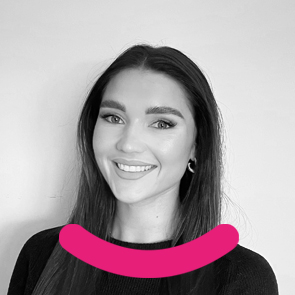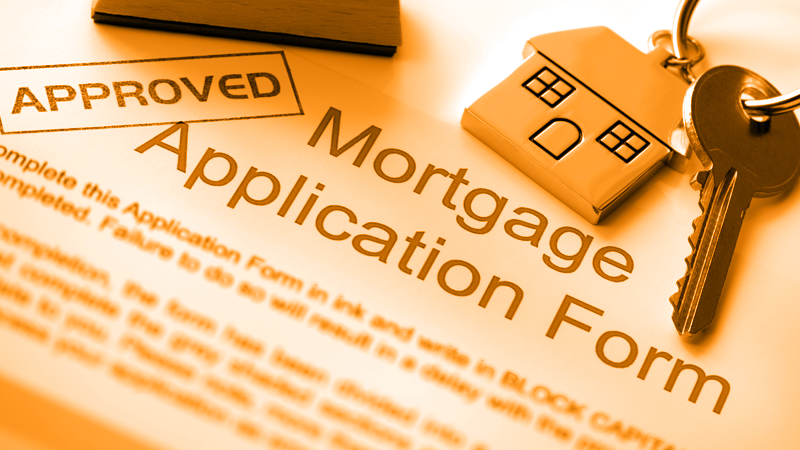How to Get a Mortgage: A First-Time Buyer’s Guide for 2025 (Step-by-Step)


Buying your first home and dealing with mortgages can feel overwhelming. The process becomes a lot less stressful once you understand the basic steps to get a mortgage. You'll need to complete several important stages, but the mortgage process follows a logical order.
Getting your finances sorted is just the start. The process needs specific knowledge and preparation at every step. You’ll move from getting an agreement in principle to finding the right property. Making an offer comes next, followed by completing all legal requirements.
This piece breaks down exactly how to get a mortgage in 2025, with practical tips for first-time buyers. We’ll cover everything you need to know – from figuring out what you can afford to getting your house keys. Some lenders now provide 95% LTV mortgages without using the Government’s mortgage guarantee scheme.
Step 1: Check What You Can Afford
Use a mortgage calculator to estimate your budget
Mortgage calculators are great tools that help you understand your financial position before talking to lenders. These free online tools let you:
- See how much you might be able to borrow based on your income
- Calculate estimated monthly payments
- Test different deposit amounts to see how they affect your loan
Most major banks and building societies have mortgage calculators on their websites. These calculators give you a rough idea of your budget. The actual amount a lender will offer depends on many factors that go beyond what the calculator shows.
These tools help you try different scenarios before making formal applications. To cite an instance, see how saving for another six months could boost your borrowing power or how different interest rates change your monthly payments.
Understand how your income and deposit affect borrowing
Lenders usually won’t let you borrow more than 4.5 times your annual salary. In spite of that, many people get nowhere near this maximum amount, so keep your expectations in check.
Your deposit size makes a big difference to your mortgage options. You’ll need a deposit between 5% and 20% of the property’s purchase price. On a £300,000 property, a 5% deposit would be £15,000, while a 15% deposit would be £45,000.
A larger deposit offers clear benefits:
- Lower monthly repayments
- Better interest rates
- More equity in your home
- Improved loan-to-value ratio
- Greater chance of mortgage approval
Lenders also look at other financial commitments when calculating affordability, including credit cards, loans, and dependents. Cutting down current debts and large outgoings can help increase your borrowing potential.
Factor in monthly repayments and other costs
Monthly mortgage payments are just one part of buying a home financial commitment. Your repayments change based on:
- The loan amount
- The interest rate
- The term length
- Whether you choose a repayment or interest-only mortgage
A capital repayment mortgage means your monthly payments cover both the capital and interest. Most of your payment goes toward interest in the early years. As time passes, you’ll pay off more capital each month.
There are many extra costs to budget for that could add thousands of pounds to your house purchase. These include:
- Arrangement fees (typically around £1,000)
- Booking fees (£100-£250)
- Legal/conveyancing fees (£850-£1,500)
- Valuation fees (up to £300)
- Land registry and searches (£250-£300)
- Stamp duty (depends on property price – first-time buyers may get exemption or discount)
Budget calculators help you work out how much you can save monthly for these extra costs. Saving £100 per month adds up to £6,000 over five years.
Understanding these financial elements will give you a clear picture of what you can afford. This helps you look at properties in your price range and avoid financial stress later.
Mortgageable offers a free Equifax Credit Report as part of its service, with no obligation to proceed. Something worth considering.
Step 2: Get a Mortgage Agreement in Principle
What is a Decision in Principle?
An Agreement in Principle (AIP) is a statement from a lender that indicates how much they might lend you based on their first look at your finances. You might hear it called different names like Mortgage in Principle (MIP), Decision in Principle (DIP), Mortgage Promise, or Approval in Principle. These terms all mean the same thing – a certificate showing how much a lender might offer you.
The AIP looks at your finances through a soft credit check that won’t affect your credit score. This is different from a full mortgage application that needs a complete analysis of your finances and uses a hard credit check.
Most AIPs last between 30 and 90 days, depending on the lender. You’ll have enough time to find a property while knowing roughly how much you can borrow. Just note that an AIP doesn’t guarantee you’ll get a mortgage offer when you submit your full application.
Why estate agents ask for it
Estate agents want to see an AIP for several good reasons. We checked that you’re a serious buyer who has already started the process to buy a property. Having an AIP can give you an edge when you’re competing with other buyers for the same property in today’s market.
More than that, an AIP boosts your credibility with estate agents and sellers. They take your offers more seriously once they know you’ve passed initial financial checks. Some places, especially in Scotland, won’t even let you view a property without an AIP.
The AIP helps you avoid disappointment by keeping you focused on homes you can actually afford. Your house-hunting experience becomes quicker as you’ll know exactly which properties line up with your budget.
How to apply for one
Getting an AIP is pretty simple. You can do it online, over the phone, or in person with a lender. The whole thing usually takes about 10 minutes.
You’ll need these things to apply:
- Your personal details, including name and date of birth
- Address history for the last three years
- Details of your income and monthly outgoings
- Information about your savings and existing debts
- Your National Insurance number
The lender will run a soft credit check and work out how much they might lend you. You should get an answer right away if you apply during business hours.
It’s smart to research and pick the lender you’d actually want your mortgage from before you start. Too many credit searches in a short time can affect your credit score. You might want to talk to a mortgage broker who can find deals that fit your situation.
An AIP isn’t mandatory, but it’s a great way to get started with your mortgage. It helps you understand your budget and makes you look like a more serious buyer.
Step 3: Start House Hunting
Your mortgage trip really kicks off once you have your original budget and Agreement in Principle. Now comes the fun part – finding your dream home. You need a solid plan to find a property that fits your needs and budget.
Set your priorities and deal-breakers
A clear list of must-haves makes house hunting much easier. Pick your top 3-5 priorities and skip properties that don’t match these key points. Smart buyers focus on things they can’t easily change, such as:
- Location and neighbourhood
- Property size and number of bedrooms
- Garden or outdoor space
- Parking availability
- Structural condition
- Quality of major home systems (electrical, plumbing)
You can track this in a spreadsheet or just talk it through honestly. Ask yourself: “Would I buy an amazing house if it didn’t have this feature?” If the answer is no, put it on your non-negotiable list.
Be flexible with location or features
Note that location is the one thing you can never change. That’s why it tops almost everyone’s list, though it means something different to each buyer. Some care about schools, others about commute time, safety, or nearby amenities.
Therefore, you might want to be flexible with other features to get the right location. Many buyers find they can compromise on interior features to buy in their preferred area. You can renovate a small kitchen, but you can’t move a house away from a busy road.
This works both ways. If specific property features matter most to you, you might need to look at different neighbourhoods. First-time buyers often find great deals in up-and-coming areas just outside their ideal spot.
How to view properties effectively
You need a good strategy when viewing your shortlisted homes. Don’t let nice décor sway you. Here’s what to do:
Visit the property more than once at different times. This shows you how light, traffic, and noise change through the day. A quiet noon street might turn into a busy rush hour route.
Bring a detailed checklist that covers:
- Structural condition (look for large cracks in walls)
- Signs of damp or mould
- Condition of windows and doors
- Water pressure and heating systems
- Natural light levels
- Storage space
- Direction the garden faces (south-facing gets most sun)
Test everything – run taps, flush toilets, open windows, and check mobile signal strength. Take photos (ask first) to compare properties later, as they tend to blur together after several viewings.
The surrounding area matters too. Walk around at different times, check local amenities, and get a feel for the community. These things affect your daily life and stay the same after you buy.

Step 4: Make an Offer and Apply for a Mortgage
How to make a strong offer
The property you love is within reach. Your next move is a compelling offer. Research similar property prices in your area to make sure your offer makes sense. Sellers love first-time buyers with no chain, especially when they want a quick sale.
Your Agreement in Principle should be ready along with your solicitor’s details. This shows sellers you mean business. The best strategy might be to put your strongest offer forward right away. Many experts say this helps avoid long negotiations.
The property should come off the market right after your offer gets accepted. This protects you from gazumping – when another buyer swoops in with a higher offer.
Choosing between a lender and a mortgage broker
A big decision awaits you: should you apply directly with a lender or work with a mortgage broker?
Mortgage brokers connect with lenders of all sizes to find great deals. Banks stick to their own products. Brokers often discover better rates that match your situation perfectly.
The support you get varies too. Brokers handle most paperwork and documentation, which speeds things up. Direct bank applications might work better if you’re already their customer.
Money matters differ here. Some brokers charge fees while others get paid by lenders. Banks give free mortgage advice but their rates might not be as competitive.
What documents you’ll need for the full application
Your formal mortgage application needs several key documents:
- Proof of ID: Passport or driving licence
- Proof of address: Recent utility bills, council tax bills, or bank statements
- Evidence of deposit source: Bank statements showing savings or a gift letter from anyone helping you
- Proof of income: Latest payslips and bank statements
- Proof of expenses: Documentation of financial commitments
Self-employed? You’ll need extra paperwork. This includes two years of accounts, SA302 forms, tax year overviews from HMRC, and business bank statements.
Getting these documents ready early makes your application move faster and smoother.
Step 5: Legal Checks and Final Steps
The last part of your mortgage trip involves crucial legal processes and checks to protect your investment. You need to understand these steps to transition smoothly into homeownership.
What conveyancing involves
Conveyancing transfers property ownership from seller to buyer legally. The process starts once the seller accepts your offer and continues past completion. Most buyers work with a legal professional—a solicitor, licenced conveyancer, or chartered legal executive—though you could handle it yourself.
Your conveyancer will:
- Complete ID and anti-money laundering checks
- Get into the draft contract and ask questions
- Run property searches and title investigations
- Handle payments and register the property in your name
Types of property surveys and why they matter
A property survey differs from the lender’s mortgage valuation. Surveys aren’t legally required, but they spot potential risks that could affect your decision or help you negotiate the price.
The main survey types include:
- RICS Home Survey Level 1: Simple overview suitable for modern properties in good condition (£300-£900)
- RICS Home Survey Level 2: Standard choice that looks at condition and highlights issues like damp (£400-£1,000)
- RICS Home Survey Level 3: Complete analysis suited for older or unusual properties (£630-£1,500)
Receiving your official mortgage offer
Your lender will send an official mortgage offer to you and your solicitor after processing your application. You must have buildings insurance ready before the exchange. The solicitor reviews all conditions and asks you to sign and return the offer.
Exchanging contracts and completing the sale
Contract exchange makes your purchase legally binding. Solicitors read out contracts over the phone to ensure they match. You’ll pay your deposit (usually 10%) at this stage.
You’ll have 7-28 days between exchange and completion to prepare for the move. Your solicitor transfers the remaining funds on completion day, and once the seller receives them, you’ll get the keys to your new home.
Related reading:
Conclusion
Getting your first mortgage needs careful planning and patience. The process becomes easier when you break it down into simple steps. This piece shows you how to check what you can afford, get an Agreement in Principle, look for properties, make strong offers, and handle the final legal work.
The mortgage process can feel overwhelming for first-time buyers. A clear understanding of each stage takes away much of the confusion and worry. Your financial groundwork is crucial for a successful application. A good deposit, managed debts, and a budget for extra costs will boost your chances by a lot.
Note that staying flexible helps when you’re looking for a property. You might need to compromise to find the right mix of location and features. This mindset creates realistic expectations and better buying decisions. A detailed property inspection also helps you avoid costly surprises after you move in.
Professional help is a great way to get through this process. A mortgage broker can find you competitive rates, while a solicitor handles the legal work. Expert guidance helps you dodge common mistakes and speeds up the whole ordeal.
Understanding mortgage terms and requirements before you start your search saves you from headaches later. This knowledge lets you tackle each step with confidence. You can ask the right questions and make smart choices about what’s likely to be your life’s biggest financial decision.
The road to owning a home might look scary at first. Each step you complete brings you closer to getting your new home’s keys. Your hard work pays off with more than just a property – it gives you the security and joy of owning your first home.
Key Takeaways
Getting your first mortgage in 2025 requires systematic preparation and understanding of each crucial step in the home-buying process.
• Budget realistically with a 5% minimum deposit – Use mortgage calculators and factor in hidden costs like legal fees, surveys, and stamp duty beyond your monthly repayments.
• Secure an Agreement in Principle before house hunting – This demonstrates you’re a serious buyer and strengthens your position when making offers on competitive properties.
• Prioritise location over changeable features – Focus on 3-5 non-negotiable requirements and remain flexible on aspects like décor or kitchen size that can be renovated later.
• Prepare comprehensive documentation early – Having proof of income, deposit source, and expenses ready speeds up your full mortgage application significantly.
• Invest in professional property surveys – Beyond the lender’s basic valuation, surveys identify potential issues that could affect your purchase decision or negotiating position.
The mortgage process follows a logical sequence from affordability assessment to completion, but thorough preparation at each stage protects you from costly surprises and strengthens your position as a first-time buyer in today’s competitive market.














